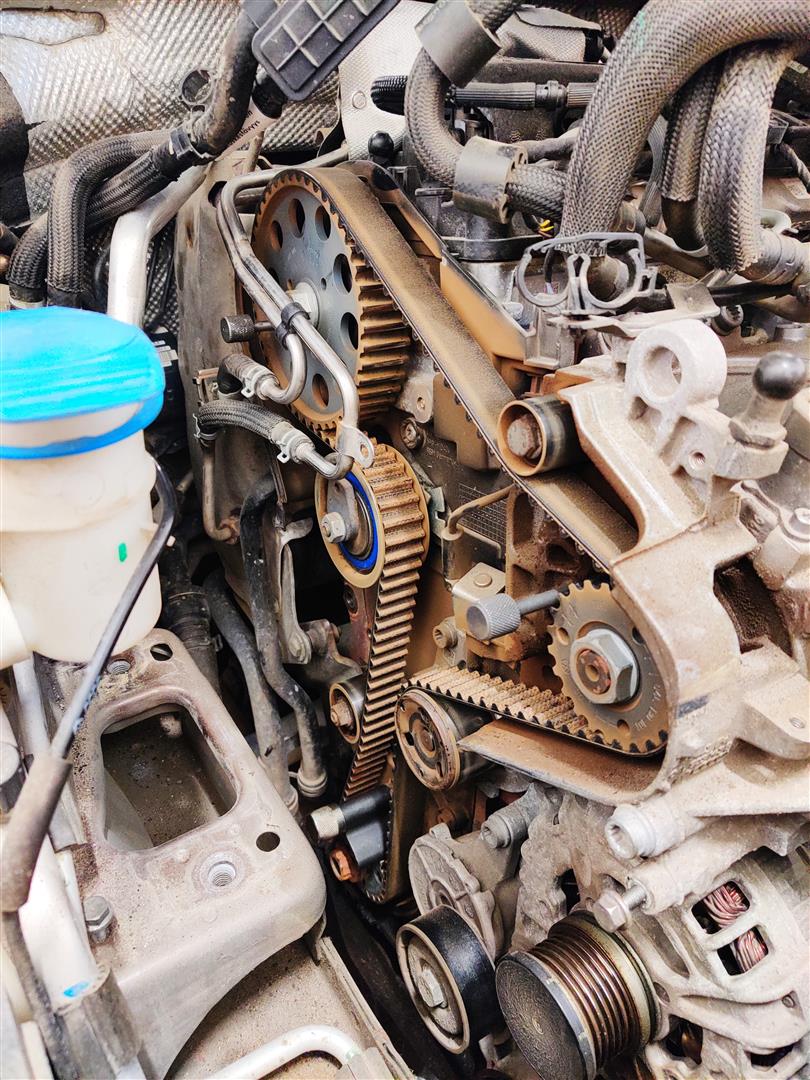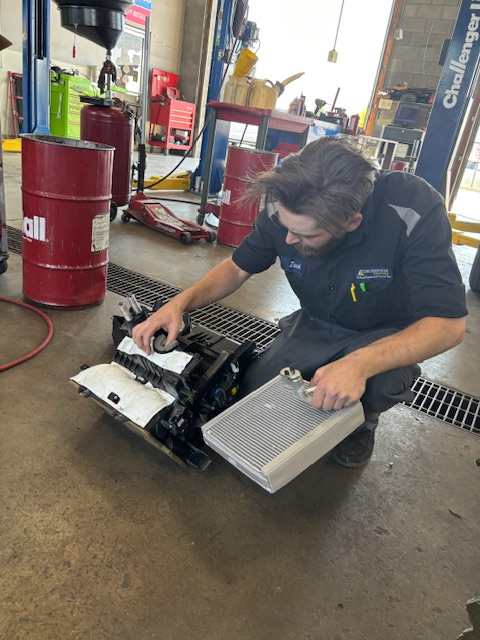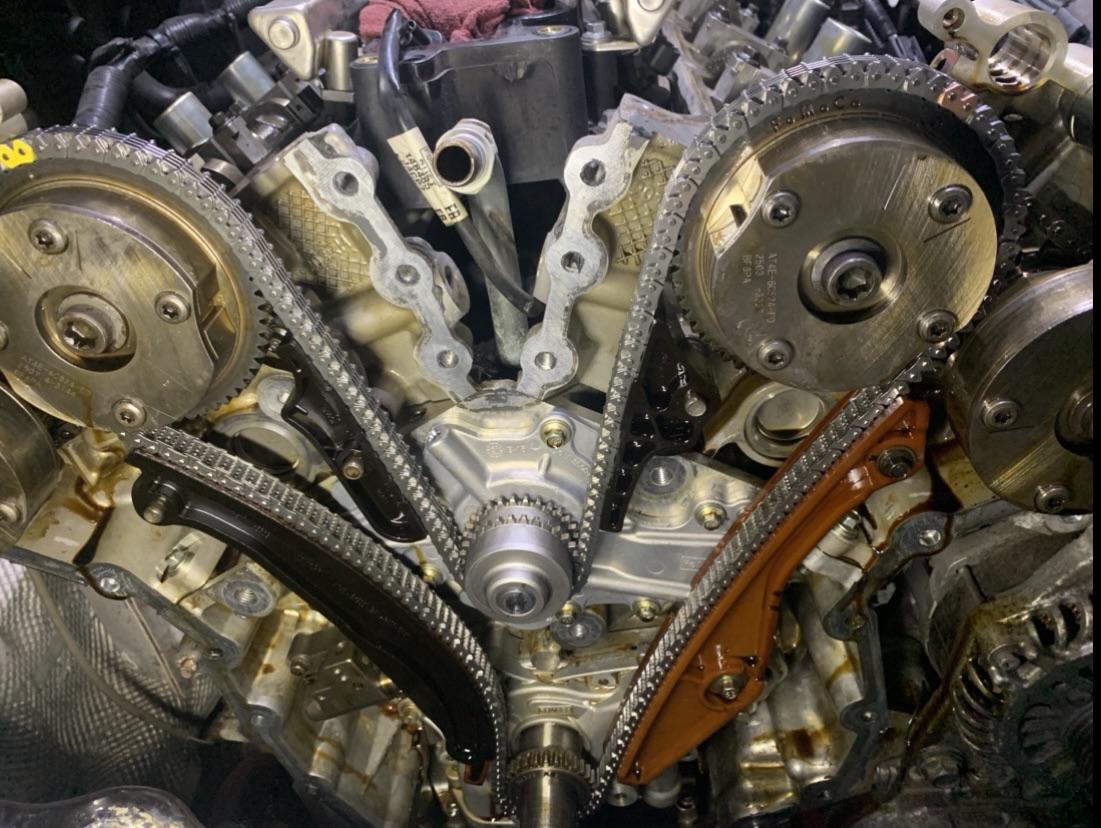Posted on 1/14/2025

The timing belt is one of the most critical components in your Honda Odyssey’s engine. It synchronizes the rotation of the crankshaft and camshaft, ensuring the engine’s valves open and close at the right time. Over time, the timing belt can wear out or degrade, and if it fails, it can lead to severe engine damage. Here’s everything you need to know about replacing the timing belt in your Honda Odyssey. When Should You Replace the Timing Belt? Honda recommends replacing the timing belt in most Odyssey models every 60,000 to 100,000 miles, depending on the year and driving conditions. Check your owner’s manual for the specific maintenance schedule for your vehicle. Additionally, replace the timing belt sooner if: You notice cracking, fraying, or glazing on the belt. Most cases the timing belt is not visible with out removing the timing cover. You hear a ticking noise coming from the engine. Coolant leaking from the water pump ... read more
Posted on 1/8/2025

What Are the Signs of a Leaking Heater Core? A leaking heater core can cause a variety of problems in your vehicle, and recognizing the warning signs early can save you from costly repairs. This critical component of your car’s heating and cooling system is essential for maintaining comfort in colder months and ensuring the proper functioning of your vehicle. Here are some key indicators that your heater core might be leaking: Signs of a Leaking Heater CoreFogged-Up Windows When Starting the Vehicle If your windows fog up shortly after starting your car, especially when the heater is on, it could be a sign of coolant vapor leaking from the heater core into the cabin. Coolant on the Floorboards Puddles or a damp feeling on the passenger-side floorboards often indicate a leaking heater core. Coolant has a sweet smell, so if you notice an unusual odor in your car, check for wet spots under the dash. ... read more
Posted on 12/12/2024
.jpeg)
Your vehicle’s thermostat is a small but crucial component that plays a significant role in maintaining the engine’s temperature. When it’s functioning correctly, the thermostat regulates the flow of coolant to ensure your engine stays within the optimal temperature range. However, if the thermostat fails, it can lead to serious issues. Here are some common signs of a bad thermostat you should watch out for: 1. Engine Overheating One of the most obvious signs of a faulty thermostat is engine overheating. If the thermostat is stuck closed, it prevents coolant from circulating through the engine, causing the temperature to rise rapidly. An overheating engine can lead to severe damage, including a blown head gasket or warped engine components. 2. Engine Running Too Cold On the flip side, if the thermostat is stuck open, the coolant continuously flows through the engine, preventing it from reaching its optimal operating temperature. T ... read more
Posted on 11/6/2024

Timing chains are a critical part of a vehicle's engine, responsible for synchronizing the camshaft and crankshaft to ensure smooth engine operation. When working properly, they help maintain optimal engine performance and longevity. However, Ford owners may be all too familiar with timing chain problems, which have affected certain models and years over time. Here, we’ll dive into the timing chain issues that have impacted Ford vehicles, detailing what years were affected and what problems drivers may face. What is a Timing Chain, and Why is It Important? A timing chain is a metal chain that connects the crankshaft and camshaft, enabling them to move in perfect harmony. Unlike timing belts, chains are designed to last much longer—often the life of the engine itself. However, when a timing chain fails or starts to wear out prematurely, it can lead to serious engine issues or even complete failure. Common Problems with Ford Timing Chains ... read more
Posted on 9/18/2024

Once a year we are required to get an emissions test and register our vehicles in Utah County, but your check engine light is on. Here at Dickerson Automotive we have been advised but the Utah County Health Department to always start with an emissions test even if that vehicle is going to fail. Why is it that we would want to start with a test that is not going to pass? There are a couple reasons why we would want to start with a failed test. The manufacturer is responsible for light duty vehicles to pass emissions within the first 2 years and under 24,000 miles. There are also 3 major components covered for 8 years or 80,000 miles. So, if there is a chance it is covered by warranty we would need to send you to the dealer. On occasion the repairs completed did not influence the check engine light or you have spent at least $450 dollars, and the check engine light remains on did not reduce the pollution levels below standard, you would be able to apply for a waiver a ... read more